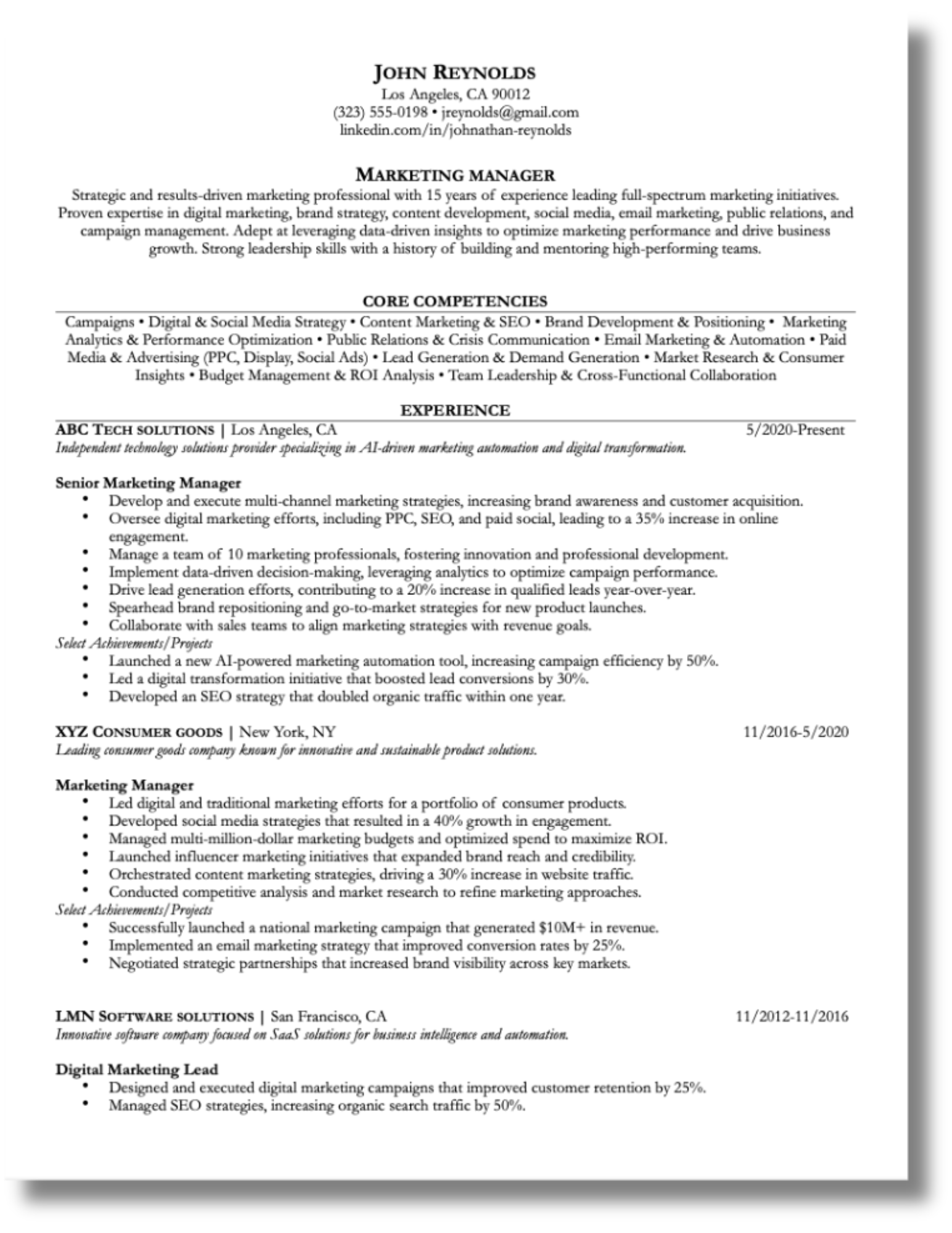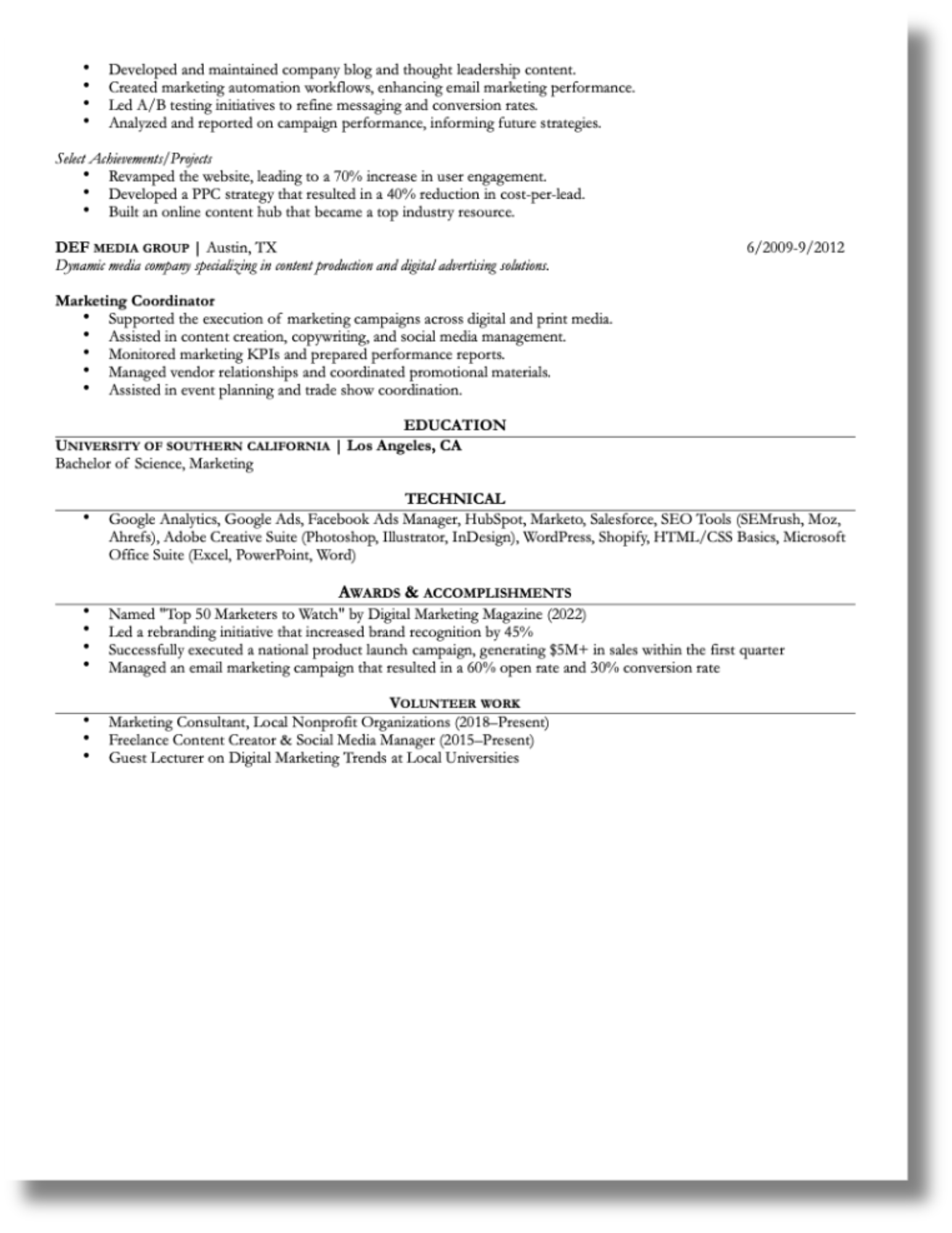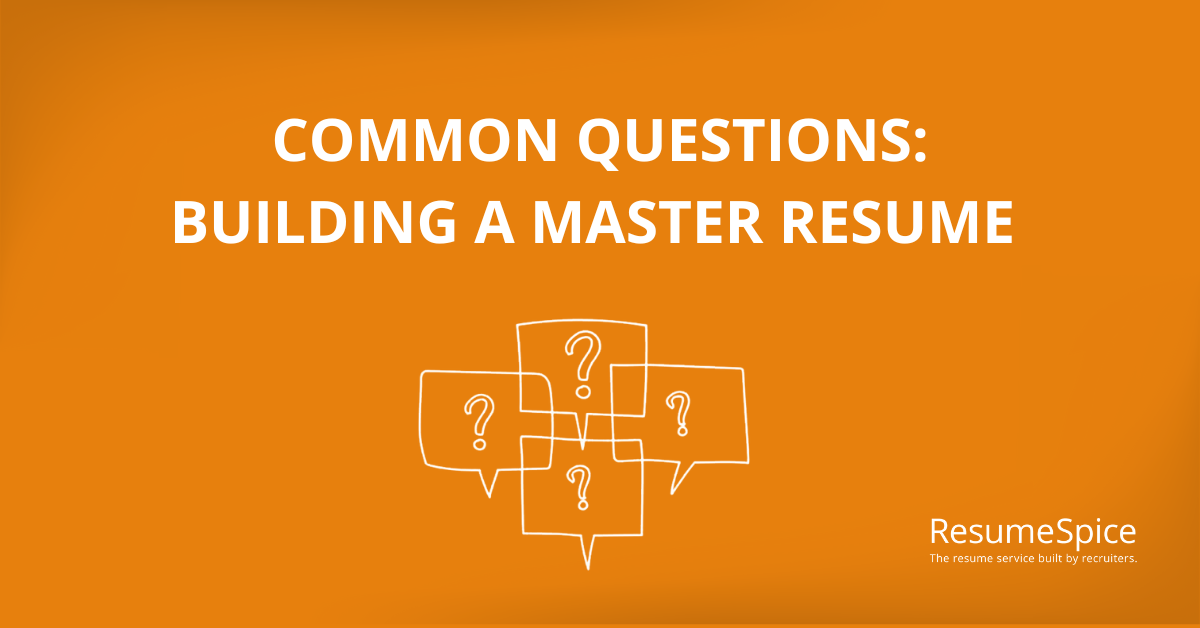A resume is a resume, right? Not so fast! If you’ve been sending out the same resume for every job listing, wondering why you’re not getting the interviews you deserve, it might be time to rethink your strategy. In a competitive job market, one-size-fits-all resumes just don’t cut it anymore. But how many resumes should you actually have? We recommend crafting tailored versions of your resume for each job application. This will help you stand out to both Applicant Tracking Systems (ATS) and hiring managers, highlighting the best of your skills, experiences, and accomplishments for each role.
The key is starting with a master resume that captures everything you’ve done and then customizing it for specific roles, industries, or career moves. Let’s break down the process and show a simple way how to approach building multiple versions of your resume.
Creating Your Working Master Resume

Before you start customizing resumes left and right, it’s important to first create your master resume. Think of this as an internal working document- the all-inclusive list of everything you’ve ever done professionally – your hard and soft skills, certifications, volunteer work, and accomplishments. It’s not meant to be sent out to recruiters, but rather serves as the ultimate reference point for creating tailored resumes.
🔶 What should you include on your master resume?
Full work history: List every role you’ve ever had – regardless of whether it will appear on your tailored resumes. This way, you won’t forget anything important when customizing for each job.
Relevant skills: Both hard (technical) and soft (interpersonal) skills should be included. This can help when customizing for specific roles.
Certifications & training: Include any relevant certifications, courses, or workshops you’ve completed.
Education details: Your degrees, specializations, and academic accomplishments should be noted here.
Volunteer & freelance work: Sometimes these roles can add more to your profile than full-time positions.
Awards & accomplishments: Highlight any recognition or achievements that help illustrate your value.
Detailed descriptions of previous roles: Instead of simply listing your job title and responsibilities, go into detail about your accomplishments and contributions.
✨Tip: Job seekers, think of your master resume as a reference library you can pull from during your job search. Keeping this master document updated allows you to efficiently highlight the most relevant skills and experiences – increasing your job application efficiency!
Example Master Resume


Drafting a Tailored Resume

A tailored resume is a personalized version that speaks directly to the job at hand. It shows the hiring manager that you took the time to understand the role and are presenting yourself as the best candidate for it.
🔶 Key sections to customize on your tailored resume:
Job title & branding statement: Update these to match the specific role you're applying for, emphasizing your most relevant skills and experience. For example, if you're applying for a Digital Marketing Manager position, your resume should be titled “Digital Marketing Manager” and the branding statement should outline why you're the best fit.
Core competencies: Tailor this section to highlight the specific skills and experience that are relevant to the position. If the job is focused on project management, mention your experience leading teams, managing timelines, and executing strategies.
Work experience & bullet points: Reorder and customize the bullet points for each job. If the role requires customer service experience, place your most relevant customer-facing accomplishments at the top of the list.
Skills section: Highlight the key skills requested in the job description. It is best practice to break this out into two sections, “Skills” and “Technical Skills”.
Keywords from the job posting: This not only helps you get through ATS, but it also catches the attention of hiring managers who are specifically looking for certain terms.
Quantify achievements: Whenever possible, include metrics that showcase your accomplishments. Hiring managers are more likely to take note of tangible results, such as “Increased sales by 25% over six months” or “Reduced operating costs by 15% annually.”
✨Tip: For further resume guidance and inspiration, check out our blog that outlines the best skills to add to your resume to stand out in the job market
Creating Your Industry-Specific Resume

What if you’re applying for jobs in more than one industry? For example, perhaps you’re applying for roles in marketing and public relations – two fields that require slightly different skill sets and experiences. In this case, having industry-specific resumes is crucial. Tailoring your resume to fit the industry’s expectations will increase your chances of standing out in a sea of applicants.
🔶 How to structure an industry-specific resume:
Adjust the branding statement Highlight the skills and experience that are most relevant to the specific industry you’re applying to. If you’re transitioning from a creative industry to a more technical role, emphasize your analytical skills.
Emphasize transferable skills: Skills like communication, project management, and leadership are valuable across many industries. These transferable skills can make a huge difference, especially when changing careers.
Modify job descriptions: Reword your job descriptions to reflect accomplishments and responsibilities that align with the new industry’s needs. If you’re applying for a tech startup, focus on how your previous roles required innovation and adaptability.
Remove irrelevant experience: If your previous jobs included a lot of industry-specific tasks that won’t resonate with the new industry, feel free to omit them to keep your resume focused.
🤔 Wondering how long your resume should be? Check out our blog where we answer the age old question – “should you limit your resume to one page?”
Examples of Tailored Resumes for Specific Roles

Once you’ve established your master resume, it’s time to tailor it for different jobs or industries. The key here is customizing the content to highlight the most relevant experience and qualifications for each position.
Based off of our example master resume for a Marketing Manager, let's build out a few tailored resume to showcase how it can be optimized for distinct roles, like Digital Marketing Manager, Marketing Communications Manager, and PR Manager.
Here’s how you can take content from your master resume and customize it for these specific roles:
Example: Digital Marketing Manager Resume
Branding Statement:
A results-driven Digital Marketing Manager with 5+ years of experience in SEO, paid media, and analytics. Skilled at driving online growth through data-driven strategies and innovative campaigns.
Key Skills:
SEO Optimization
Google Ads & Analytics
Email Campaigns
Budget Management
Lead generation
Work Experience Highlights (from master resume):
Developed and executed a digital ad campaign that increased web traffic by 35%.
Managed SEO strategy, resulting in a 25% increase in organic search rankings.
Led social media marketing efforts, growing follower base by 40%.
Example 2: Marketing Communications Manager Resume
Branding Statement:
A skilled Marketing Communications Manager with expertise in brand messaging, content creation, and cross-channel marketing. Proven ability to align marketing strategy with organizational goals and enhance brand presence.
Key Skills:
Content Strategy
Brand Messaging
Media Relations
Event Planning
Work Experience Highlights (from master resume):
Developed comprehensive marketing communication plans for product launches, resulting in 15% sales growth.
Worked with internal teams to create branded content for newsletters, blogs, and press releases.
Managed media outreach and secured coverage in top industry publications.
Example 3: Public Relations Manager Resume
Branding Statement:
Experienced PR Manager with a strong background in media relations, crisis communication, and brand positioning. Passionate about enhancing public perception and building strong media connections.
Key Skills:
Media Relations
Crisis Communications
Public Speaking & Presentations
Press Releases
Work Experience Highlights (from Master Resume):
Managed relationships with 20+ key media outlets, securing regular coverage in top-tier publications.
Coordinated press events and product launches, generating 100+ media placements.
Developed crisis communication strategies to maintain company reputation during challenging times.
Staying Organized: How to Track Your Resume Submissions

With multiple versions of your resume, organization is key. You don’t want to accidentally send the wrong version of your resume to a recruiter. Here are a few tips on staying organized:
✅ Create a naming system: For example, use names like “JohnDoe_MarketingResume” or “JohnDoe_ProjectManagerResume” to easily differentiate between versions.
✅ Use a spreadsheet: Track which resume you sent to which company, and when. You can also log follow-up dates and interview feedback in this document to stay on top of your applications.
✅ Keep job descriptions with resumes: Store job descriptions alongside each version of your resume. This way, you’ll be able to reference the posting before an interview to help you tailor your conversation.
Summary
In today’s job market, a one-size-fits-all resume just won’t cut it. To stand out, you need multiple versions of your resume that are customized for specific roles or industries. Start by creating a master resume – a comprehensive document that includes everything you’ve done professionally—and use it as the foundation for your tailored resumes.
Whether you’re applying for a Digital Marketing Manager, Marketing Communications Manager, or PR Manager role, each tailored resume should emphasize the skills and experiences that make you the best fit for that specific job. The more precise and relevant you can be, the more likely you are to land that interview.
Q&A

Q: How should I tailor my resume for different roles?
A: Focus on customizing your branding statement, skills, and experience to align with the job description. Highlight the qualifications that are most relevant for each role.
Q: How do I decide which experience to include in my tailored resumes?
A: Only include experience that directly aligns with the role you’re applying for. For example, a marketing communications role will benefit more from your content creation and media relations experience than from technical skills.
Q: Can I use the same master resume for all my job applications?
A: Yes! Your master resume is a personal tool for reference. Use it to pull relevant content and create customized versions for each job application.
Need More Help with Your Resume Writing?
At ResumeSpice, we can help you create a compelling resume, as well as optimize it for ATS software and employers. You’ll get more calls for interviews and land a new job faster with our expert team. Simply reach out at 832.930.7378 or contact us online to get started.






